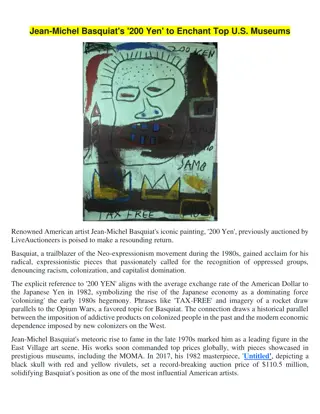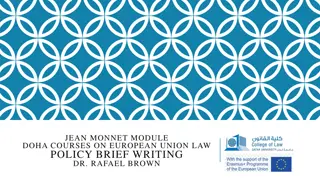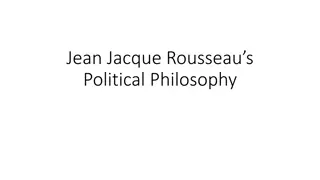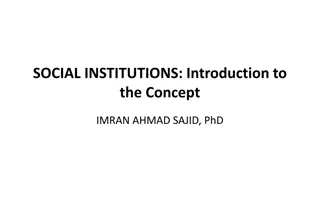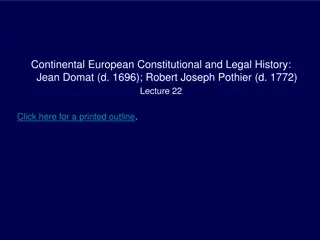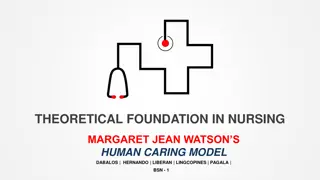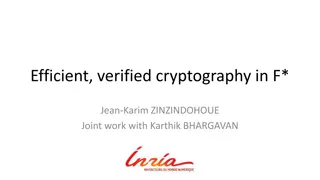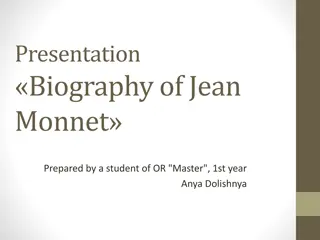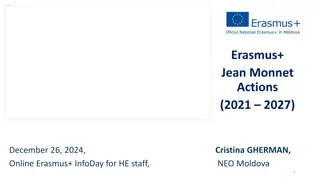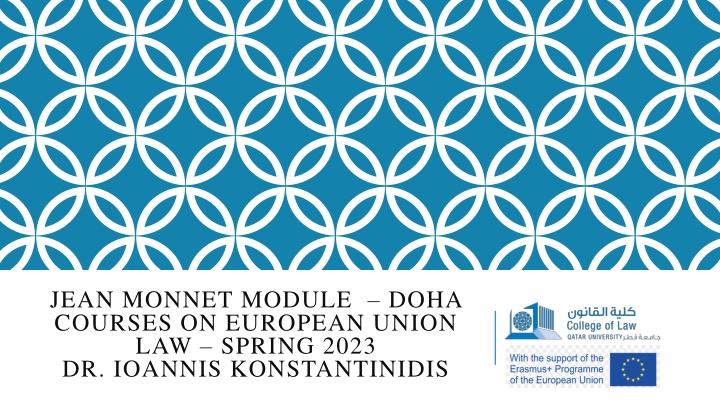
The European Union Institutions
Dive into the European Union's legal history and institutions, focusing on the functions and procedures of the European Parliament, the Court of Justice, and the EU legislative process. Discover the evolution of the European Parliament, its role in legislation, and representation of EU citizens. Gain advanced insights into the working of key EU institutions and their impact on governance.
Download Presentation

Please find below an Image/Link to download the presentation.
The content on the website is provided AS IS for your information and personal use only. It may not be sold, licensed, or shared on other websites without obtaining consent from the author. If you encounter any issues during the download, it is possible that the publisher has removed the file from their server.
You are allowed to download the files provided on this website for personal or commercial use, subject to the condition that they are used lawfully. All files are the property of their respective owners.
The content on the website is provided AS IS for your information and personal use only. It may not be sold, licensed, or shared on other websites without obtaining consent from the author.
E N D
Presentation Transcript
JEAN MONNET MODULE DOHA COURSES ON EUROPEAN UNION LAW SPRING 2023 DR. IOANNIS KONSTANTINIDIS
COURSE 1: THE EUROPEAN UNION: LEGAL HISTORY AND INSTITUTIONS WEEK 5 I. The European Parliament II. The Court of Justice of the European Union III. Special Focus on the EU Legislative Process
WEEK 5 Learning Outcomes: On completion of this week, students should Have developed an advanced understanding of the functions, composition and working procedures of the European Parliament, the Court of Justice of the European Union, as well as of the EU legislative process
I. THE EUROPEAN PARLIAMENT Defining the European Parliament
I. THE EUROPEAN PARLIAMENT The European Parliament and its functions The provisions of the EU Treaties governing the European Parliament are Article 14 TEU and Articles 223 234 TFEU
I. THE EUROPEAN PARLIAMENT The European Parliament and its functions The EEC Treaty (1957), included provision for anAssembly whose task was to exercise the advisory and supervisory powers conferred upon it The Assembly is now called the European Parliament and the words advisory and supervisory have disappeared. In 1979, the Parliament became a directly elected body
I. THE EUROPEAN PARLIAMENT The European Parliament and its functions Article 14(1) TEU now states that: The European Parliament shall, jointly with the Council, exercise legislative and budgetary functions. It shall exercise functions of political control and consultation as laid down in the Treaties. It shall elect the President of the Commission
I. THE EUROPEAN PARLIAMENT The European Parliament and its functions The Parliament represents the interests of the citizens of the European Union Is the name Parliament somehow misleading? The principal difference between the European Parliament and national parliaments is that it lacks the power to initiate legislation Its powers have increased, however, following the changes to decision-making procedures made by the SEA, TEU, ToA, ToN and ToL
I. THE EUROPEAN PARLIAMENT The powers exercised by the European Parliament Participation in the legislative processes of the Union Acting as the budgetary authority Supervision of the Commission
I. THE EUROPEAN PARLIAMENT The powers exercised by the European Parliament The budget The Union s budget is drafted by the Commission and placed before the Council and the European Parliament before 1 September each year This is necessary because the Union s financial year runs from 1 January to 31 December The budget is divided into two parts: compulsory expenditure (CE) and non-compulsory expenditure (NCE)
I. THE EUROPEAN PARLIAMENT The powers exercised by the European Parliament The budget CE relates to those items where the expenditure is required by the EU Treaties, primarily the Common Agricultural Policy, which usually absorbs around 50 per cent of the total budget NCE covers such items as social and regional policy, research and aid to non-EU countries
I. THE EUROPEAN PARLIAMENT The powers exercised by the European Parliament The budget The European Parliament may amend any part of the draft budget, irrespective of whether the item concerns CE or NCE. The Parliament adopts amendments by a simple majority of its component members. If this occurs, a meeting of the Conciliation Committee is convened, comprising members of the Council and the European Parliament The aim of this Committee is to seek agreement between the members on a joint text (Art 314(5) TFEU). Ultimately, if a joint text cannot be agreed, the Commission is required to submit a new draft budget
I. THE EUROPEAN PARLIAMENT The powers exercised by the European Parliament Supervision of the Commission There is close and continuous contact between the Commissioners and the European Parliament Although Commissioners are not members of the Parliament, they frequently take part in debates where legislation is under discussion and they will often attend the specialist committees of the Parliament to deal with detailed points arising from Commission proposals. Commissioners have the right to attend the European Parliament and to be heard
I. THE EUROPEAN PARLIAMENT The powers exercised by the European Parliament Supervision of the Commission The powers of the Parliament have been reinforced by the requirement that a new Commission is subject to a vote of consent by the Parliament The effectiveness of this provision was demonstrated in the Parliament s scrutiny of the 2004 2009 Commission. The Parliament opposed the appointment of Rocco Buttiglione (from Italy), who was subsequently replaced by Franco Frattini and the President-elect requested the replacement of Latvia s Ingridia Udre and reshuffled two portfolios
I. THE EUROPEAN PARLIAMENT The Composition of the European Parliament
I. THE EUROPEAN PARLIAMENT The Composition of the European Parliament Originally, the European Parliament s members were nominated by the national parliaments, but now it is the only directly elected institution in the Union
I. THE EUROPEAN PARLIAMENT The Composition of the European Parliament A decision of the Council adopted in June 2018 established that, after Brexit, 46 of the UK s 73 seats would be left vacant, reducing the total number of MEPs to 705. These seats will become available to new Member States if there are accessions in the future The remaining 27 seats will be distributed among 14 Member States that are currently slightly underrepresented
I. THE EUROPEAN PARLIAMENT The Composition of the European Parliament MEPs stand as members of national political parties, but sit within broad political groups rather than national affiliations in the European Parliament There are currently 8 groups. The number of seats held by each political group after Brexit will depend on the affiliation of the 27 new MEPs
I. THE EUROPEAN PARLIAMENT The Composition of the European Parliament
I. THE EUROPEAN PARLIAMENT The Composition of the European Parliament What is the rationale behind the establishment of political groups? Primarily they are formed to provide mutual ideological support and identification. In addition, there are organizational benefits, including funds for administrative and research purposes which are better deployed in support of groups than for individuals
II. THE COURT OF JUSTICE OF THE EUROPEAN UNION The Court of Justice of the European Union
II. THE COURT OF JUSTICE OF THE EUROPEAN UNION The Court of Justice of the European Union The Court of Justice of the European Union plays a pivotal role in the Union The provisions of the EU Treaties governing the Court of Justice of the European Union are Article 19 TEU and Articles 251 281 TFEU, as well as the Protocol No. 3 on the Statute of the Court of Justice of the European Union (in force since 2009)
II. THE COURT OF JUSTICE OF THE EUROPEAN UNION The Court of Justice of the European Union The Court of Justice of the European Union shall include the Court of Justice, the General Court and specialized courts It shall ensure that in the interpretation and application of the Treaties the law is observed
II. THE COURT OF JUSTICE OF THE EUROPEAN UNION The Court of Justice of the European Union Headquarters: Luxembourg Working language: French
II. THE COURT OF JUSTICE OF THE EUROPEAN UNION The Court of Justice Jurisdiction To give preliminary rulings under Article 267 TFEU at the request of a national court or tribunal: binding To establish whether or not a Member State has failed to fulfil an obligation under the Treaty. Actions for this purpose may be brought by the Commission under Article 258 TFEU, or by a Member State under Article 259 TFEU
II. THE COURT OF JUSTICE OF THE EUROPEAN UNION The Court of Justice Jurisdiction To exercise unlimited jurisdiction with regard to penalties in actions brought by the Commission under Articles 260(2) and 261 TFEU To review the legality of an act, or of a failure to act, of the Union institutions, at the request of Member States, the European Parliament, the Council or the Commission To grant compensation for damage caused by Union institutions in actions brought by Member States, and natural and legal persons under Articles 268 and 340 TFEU
II. THE COURT OF JUSTICE OF THE EUROPEAN UNION The Court of Justice Composition Article 19(2) TEU provides that the Court of Justice will consist of one judge from each Member State, who will be assisted by Advocates General. An Advocate General is an independent adviser to the Court
II. THE COURT OF JUSTICE OF THE EUROPEAN UNION The General Court To cope with the great increase in the work of the Court of Justice, the SEA provided for the creation of a Court of First Instance (CFI) to be attached to the Court of Justice (former Art 225 EC Treaty). When the ToL came into force on 1 December 2009, the CFI was renamed the General Court (Art 19(1) TEU)
II. THE COURT OF JUSTICE OF THE EUROPEAN UNION The General Court It hears actions taken against the institutions of the European Union by individuals and member States, although certain matters are reserved for the Court of Justice Its decision can be appealed before the Court of Justice
II. THE COURT OF JUSTICE OF THE EUROPEAN UNION The General Court Composition Two judges per Member State as from 1 September 2019
II. THE COURT OF JUSTICE OF THE EUROPEAN UNION Specialized Courts Article 257 TFEU empowers the European Parliament and the Council to establish specialized courts this is a renaming of the former judicial panels which were established by the Council, acting unanimously, under the former Article 225a EC Treaty
II. THE COURT OF JUSTICE OF THE EUROPEAN UNION Specialized Courts Decisions of a specialized court are subject to a right of appeal on points of law (and in certain circumstances matters of fact) to the General Court
II. THE COURT OF JUSTICE OF THE EUROPEAN UNION Specialized Courts The only specialized court to have been established so far was the European Union Civil Service Tribunal, which operated between 2005 and 2016
III. THE LEGISLATIVE PROCEDURE IN THE EUROPEAN UNION Law-making in the European Union
III. THE LEGISLATIVE PROCEDURE IN THE EUROPEAN UNION The ordinary legislative procedure Co-decision The right of initiative rests with the Commission This means that neither the Council nor the Parliament can directly propose new legislation, albeit both may request the Commission to do so
III. THE LEGISLATIVE PROCEDURE IN THE EUROPEAN UNION The ordinary legislative procedure First Reading The procedure s first reading is kickstarted by the submission of the Commission's proposal to both the Parliament and the Council. The Parliament is the first one to give its opinion and can choose three options: fully agree with it, amend it and send to the Council or reject it If the European Parliament decides to reject the proposal at this stage the procedure ends, and the Act is not adopted
III. THE LEGISLATIVE PROCEDURE IN THE EUROPEAN UNION The ordinary legislative procedure First Reading The Council can vote by qualified majority to adopt the proposal in the wording which corresponds to the position of the European Parliament or can adopt is own position on the proposed legislation and then send it back to the Parliament
III. THE LEGISLATIVE PROCEDURE IN THE EUROPEAN UNION The ordinary legislative procedure Second reading If the co-legislators are not able to agree on a position in the first reading, the procedure enters its second reading. The proposal goes back to the European Parliament where it can be approved by a majority of the votes cast or by tacit agreement The proposal can also be rejected or amended
III. THE LEGISLATIVE PROCEDURE IN THE EUROPEAN UNION The ordinary legislative procedure Second reading Parliamentary amendments mean that the proposed Act must go back to the Council where, by qualified majority, the Institution must choose one of the following: either i) accept all amendments or ii) reject all amendments. There is no more room for back-and-forth modifications between co-legislators If the Council fails to accept the Parliament s demands, a Conciliation Committee is created
III. THE LEGISLATIVE PROCEDURE IN THE EUROPEAN UNION The ordinary legislative procedure Conciliation Committee Conciliation aims at bringing the legislative procedure to a successful conclusion through closer cooperation between Parliament and Council, fostered by the Commission The Committee is composed of an equal number of representatives from the Council and from the European Parliament
III. THE LEGISLATIVE PROCEDURE IN THE EUROPEAN UNION The ordinary legislative procedure Conciliation Committee If the Conciliation Committee reaches a joint proposal, the third, and last, reading begins Both Council and Parliament have a 6-week deadline to approve the joint agreement
NEXT WEEK: OTHER EU INSTITUTIONS ACCOUNTABILITY AND TRANSPARENCY Readings Per the course syllabus

